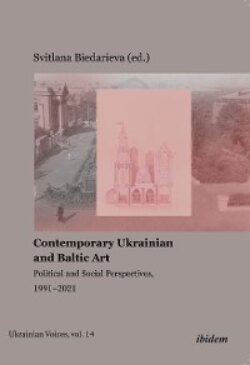Читать книгу Contemporary Ukrainian and Baltic Art - Группа авторов - Страница 16
На сайте Литреса книга снята с продажи.
Conclusion: on artistic approaches, the Baltics, and entanglements
ОглавлениеIn this article I have tried to analyze how the transformations that have been brought about by the shifting social and political contexts in the Baltics have been mapped and reflected in art from the 1990s to the present day. The examples discussed reveal these changes through diverse art languages, including metaphorical and allusive narrations about the break with the past and the emergence of new entities and identities; anthropological and documentary approaches focusing on the conditions of as well as the illusions and disillusions with new life in a neoliberal society, or the neo- and self-colonial attitudes of transition societies; contemplations about the complex and overlapping layers of time that mark the life of those whose implication in the past continues; artistic research involving oral histories, conversations, collaborations, interventions, reconstructions, and deconstructions; and a number of other approaches dealing with these subjects. These examples have revealed both active and personal, as well as distanced and detached, cognitions of these transformations that have marked the aspects of identity and belonging—which is also an important thematic axis of this article—from reflection on the differences and alterity to fluctuating, migrating, and transmuting forms of existence.
The works discussed above are most often by Latvian artists; however, I have also brought in artworks from Estonia and Lithuania. Thus, in a way, I have tried to oppose the view of some Baltic researchers that its art scenes in the post-Soviet period have been independent and different, and that they have little in common—a neglect that was possibly linked to the desire to forget and break away from anything that was related to past experiences. (Jablonskiene 2010, 191) This attempt to see the processes of Baltic art as a common or at least comparable experience may rather be a characteristic endeavor of the last decade, one that seeks to overcome local or national perspectives, but without fully merging with the homogenous global world, and to cooperate and see art lives related—translocally recognizable and regionally specific. This attempt is intended both to increase the visibility of the region in the international context by decentralizing or re-centering established art geographies, or to make their contexts more nuanced, and to better understand the specificities of the region that have much in common with post-Soviet and other Eastern European countries and their art scenes.
Through discussing the artworks, however partially, I sought to outline not only artistic approaches but also a broader picture of artistic changes through the exhibitions in which these works have been shown. In the 1990s, these were shows of the Soros Centers for Contemporary Art that reflected on new experiences and identities, as well as the exhibitions that sought to strengthen regional dialogues between the Baltic and Nordic countries. In the 2000s, these were international art events that foregrounded Europeanization narratives and were tasked with creating a dialogue between the West and East. In the 2010s, event curators strived to discuss positions and conditions of contemporary art in the region, including their complexities and particularities. Finally, the large-scale international exhibitions—analysed in more detail in the last third of this article—revealed the complex and often problematic relationships that characterize the situation of contemporary art in general.
Analyzing these changes, I have tried to discuss the postsocialist and postcolonial entanglements and their characteristic notions, like otherness, hybridity, or suture. These entanglements are sometimes perceived as problematic, as postsocialist transformations and their study have brought challenges to postcolonial discourse (which has been based on socialist and Marxist theories). On the other hand, intertwining these contexts has been criticized as an attempt to follow convenient mainstream Western models and thus itself becomes a form of knowledge colonization that generalizes and homogenizes experiences of postsocialism without taking into account their complexity and specificity. Yet, the intertwining of these discourses is important, especially through the concept of decoloniality, which suggests a more active position—a decolonizing of knowledge, which “means a coexistence and correlation of many interacting and intersecting non-abstract universals grounded in the geopolitics of knowledge, being and perception.” (Tlostanova 2017, 18) Having taken into account the regional entanglements in order to better understand the complex or even paradoxical nature of these transformations in the region, we can see, on one hand, the still-strong presence of the past—either as living or haunting, traumatic or sheltering—that continues to influence or determine our lives. On the other hand, we can also see the growing dominance of the global condition and the risk that innumerable fluid subjectivities will dissolve not only the specific and the different but also the pluralities that have been defining regional art landscapes.
